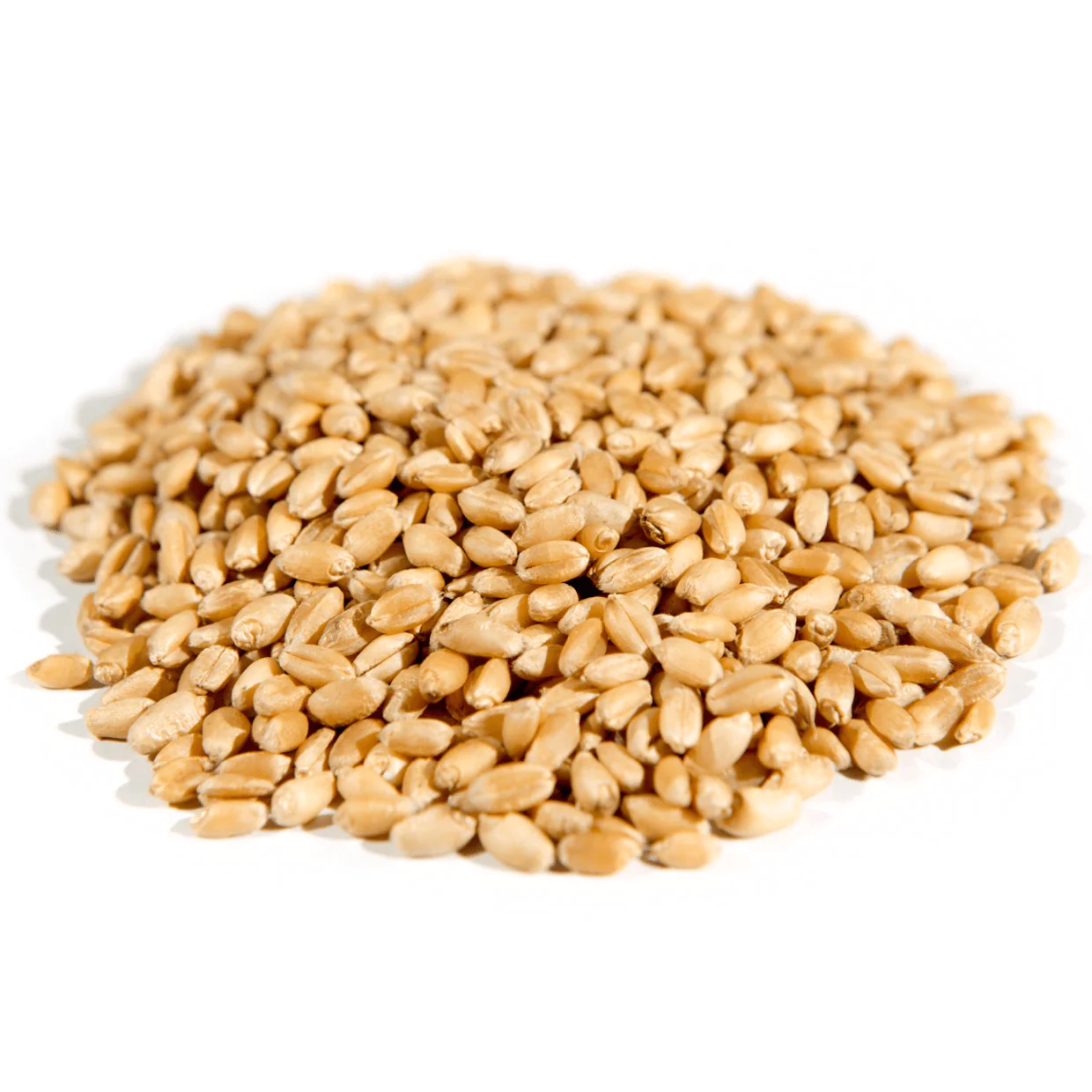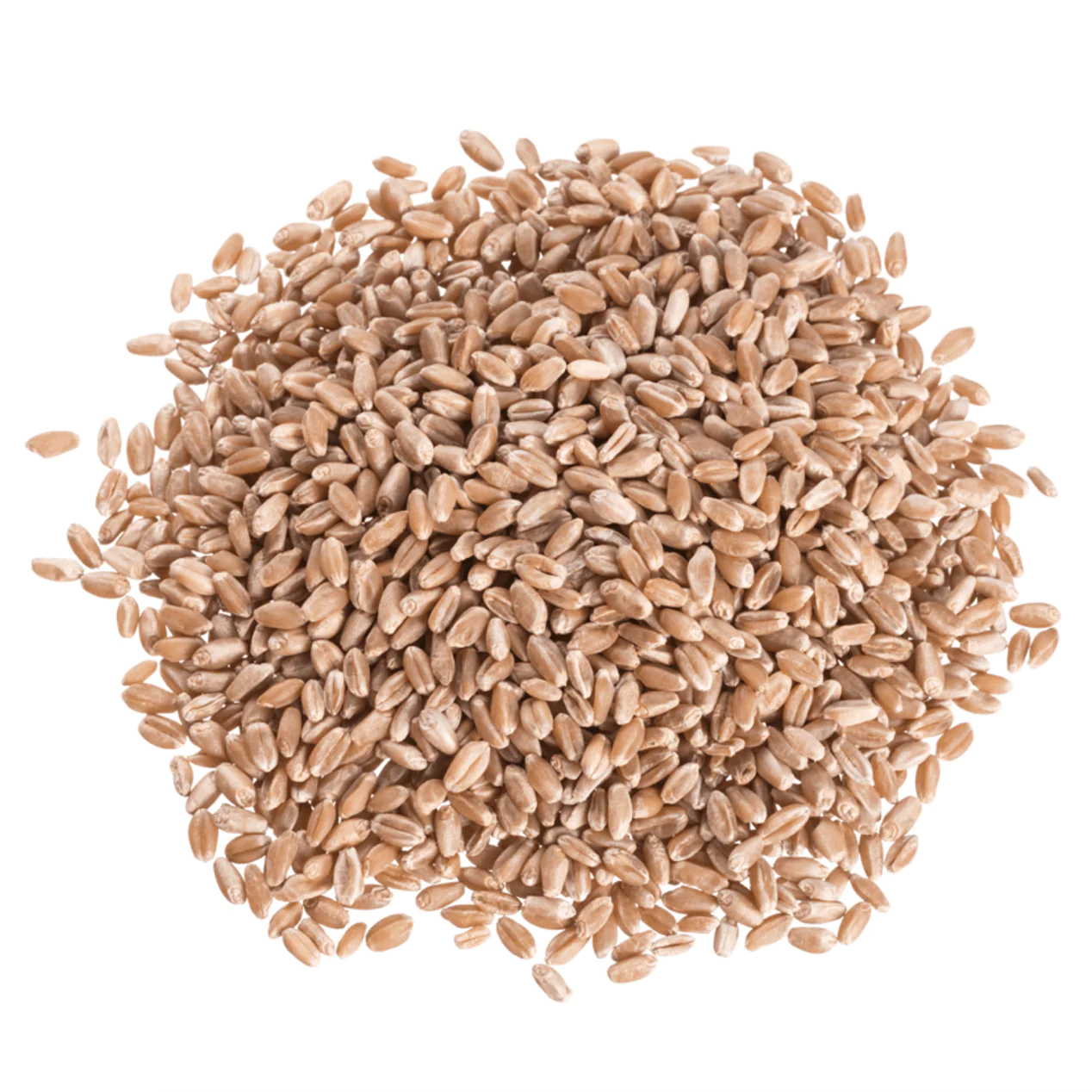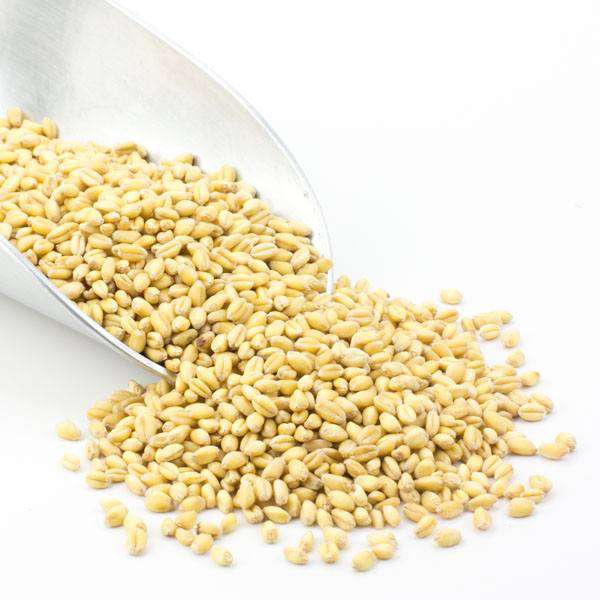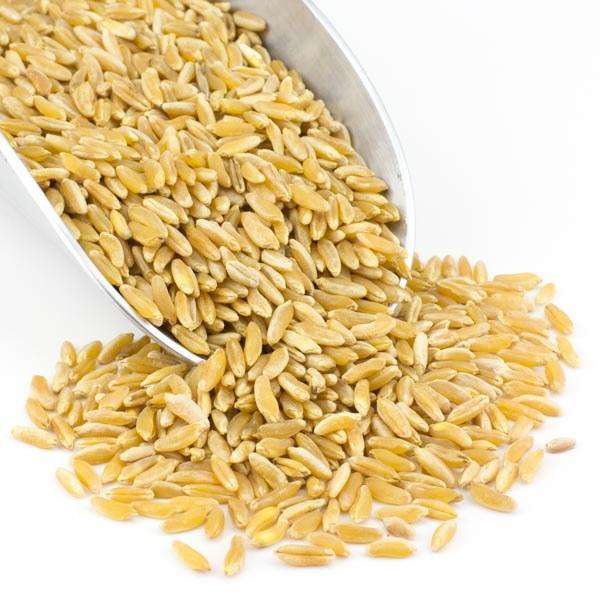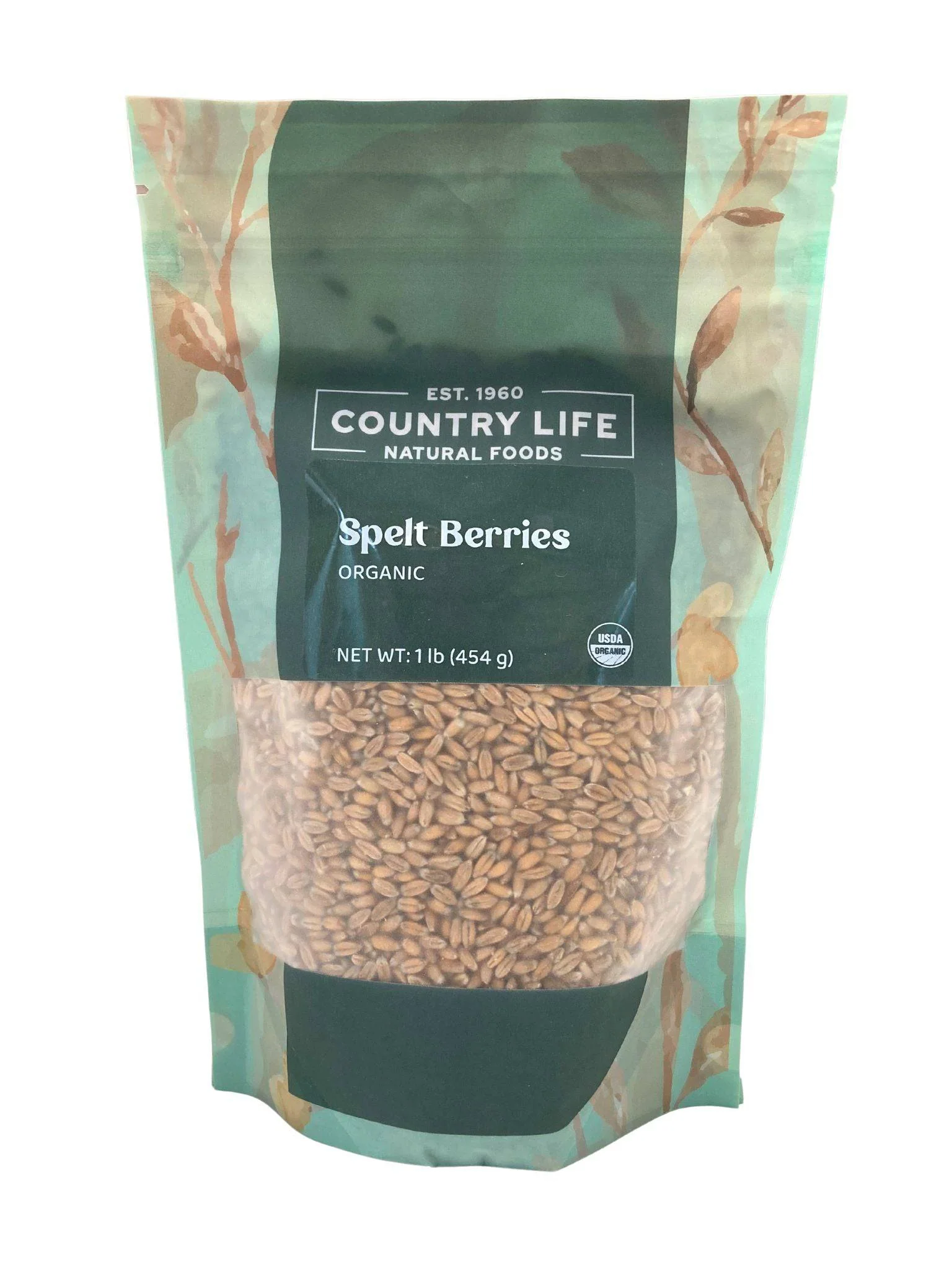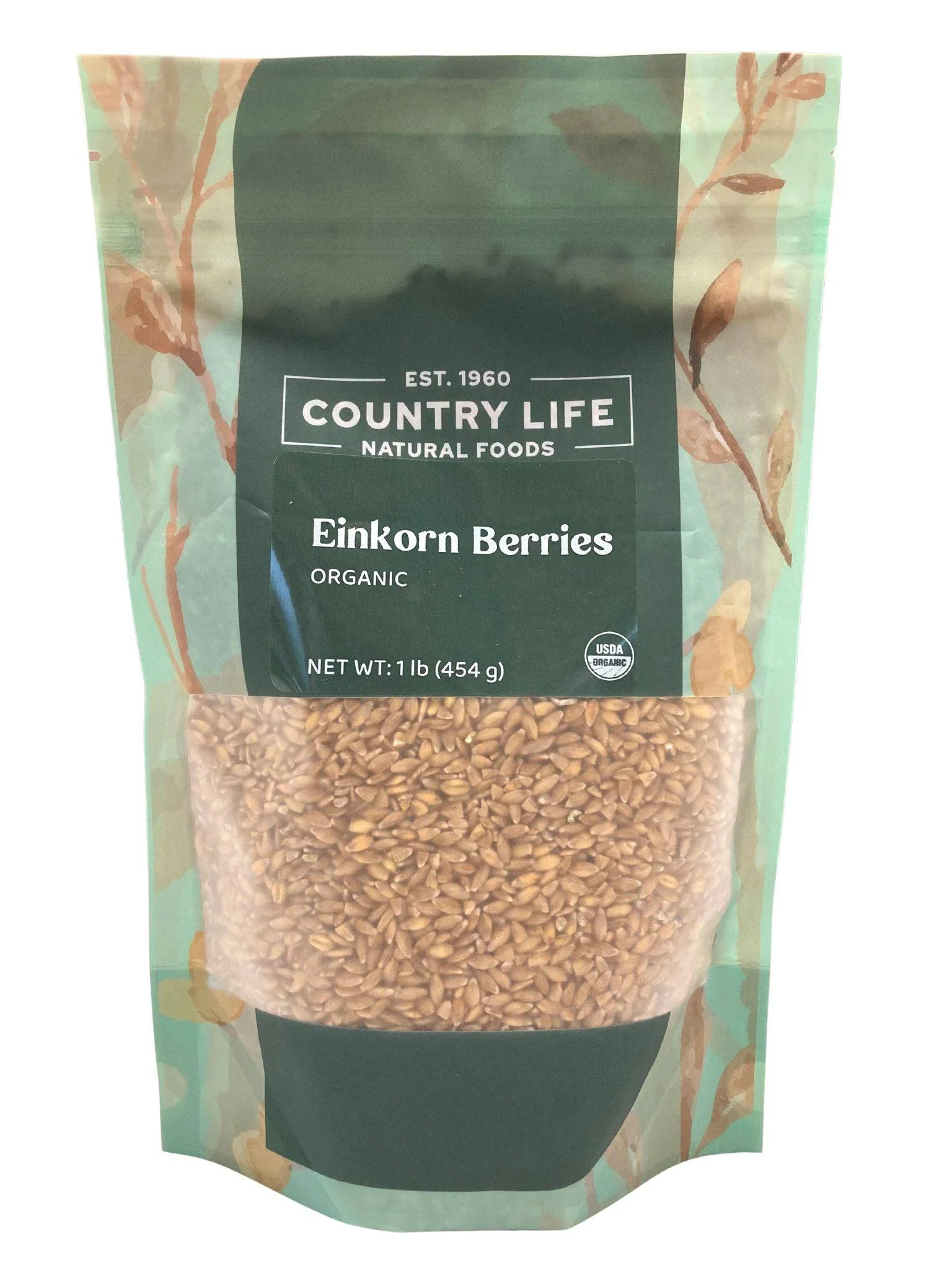Organic wheat berries are a powerhouse of nutrition and versatility in the culinary world. From hearty salads to wholesome bread, these whole grains offer a range of health benefits and recipe possibilities!
In this comprehensive guide, we'll delve into the different types of wheat berries and their health benefits.
We'll also answer your questions, such as how to cook them, ways to incorporate them into your meals, how to sprout wheat berries, and which are the best wheat berries for bread.
Let's get to it!
But first, buy your preferred ORGANIC WHEAT BERRIES here!
TYPES OF WHEAT BERRIES
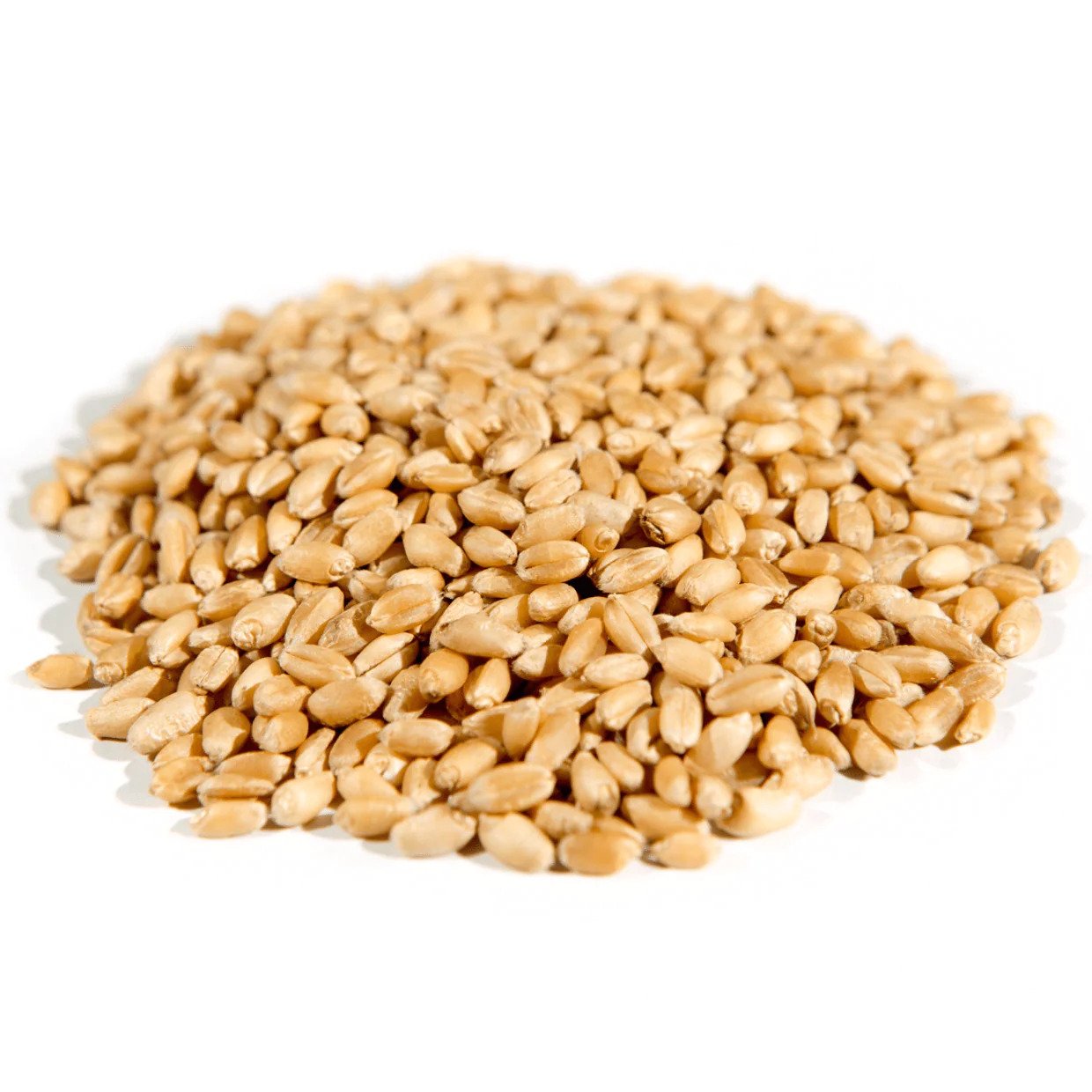
HARD WHITE WHEAT BERRIES
------Hard white wheat berries have a milder flavor compared to their red counterparts. Its mild taste allows other ingredients to shine, making it a perfect canvas for various flavors and spices.
Due to their high protein content and gluten strength, hard white wheat berries are great for yeast and sourdough-raised bread and pizza dough.
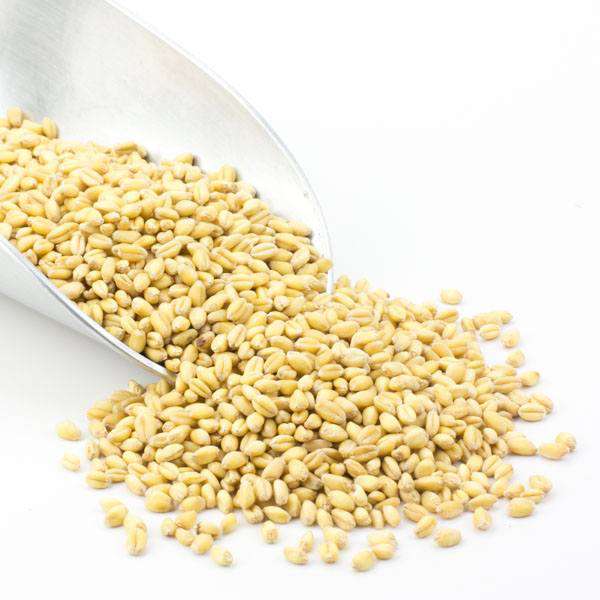
SOFT WHITE WHEAT BERRIES
------Soft white wheat berries have a lower protein and gluten content compared to hard wheat berries. They are commonly used in pastries, sponge cakes, cookies, muffins, pancakes, and anything that does not require gluten.
Their light nature and mild flavors impart a tender texture, soft crumb, and a bit of sweetness to baked goods and allow other ingredients to shine.
Soft white and hard white wheat berries are two great, versatile varieties to have on hand to make most recipes.
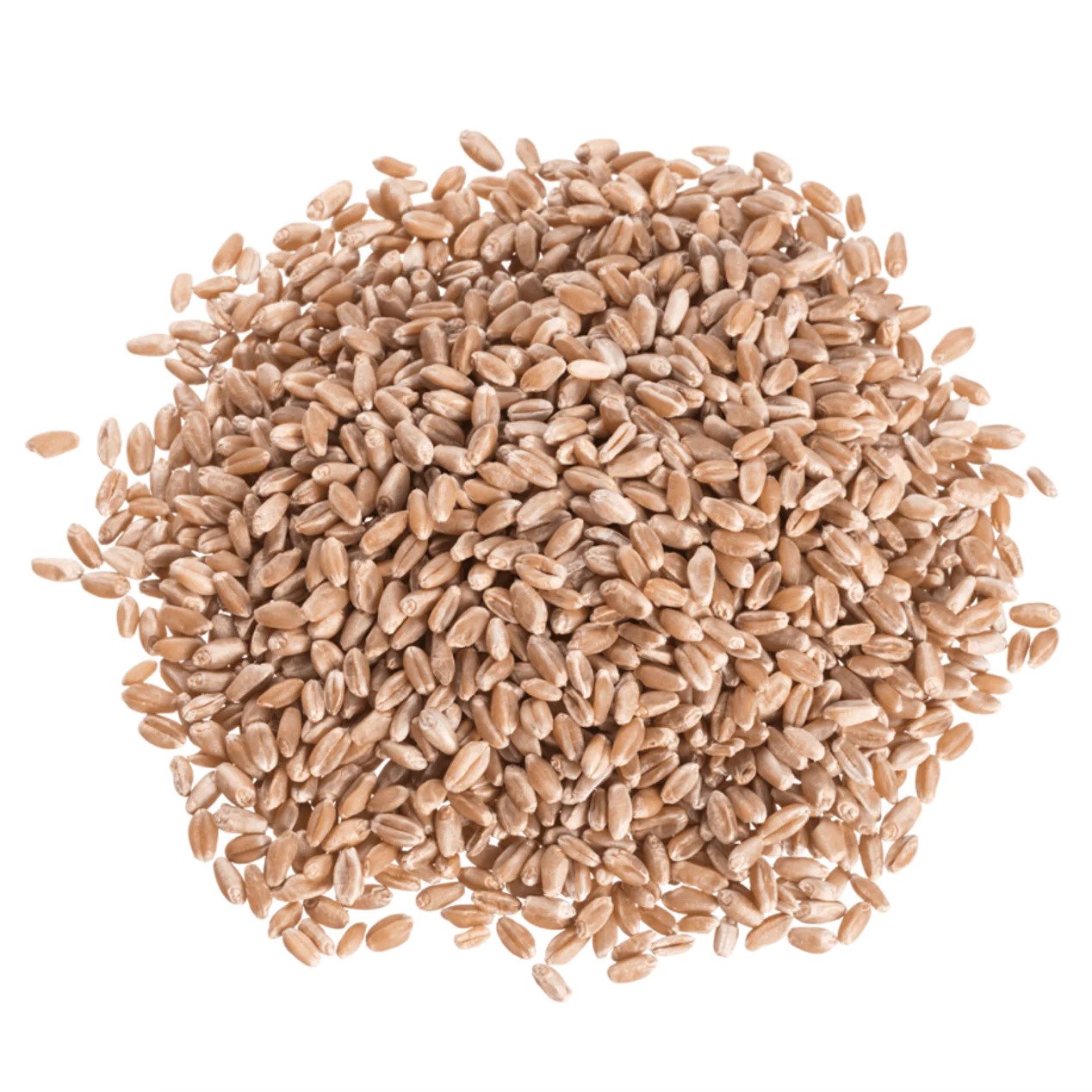
HARD RED WHEAT BERRIES
------Hard red wheat berries have a robust, richer, nutty flavor that lends depth to baked goods. This grain is darker in color and offers a nutritious and enjoyable end product.
Hard red wheat berries are commonly used for making whole wheat flour and bread. They have a higher protein content than soft wheat berries, making them suitable for hearty bread recipes that require more gluten.
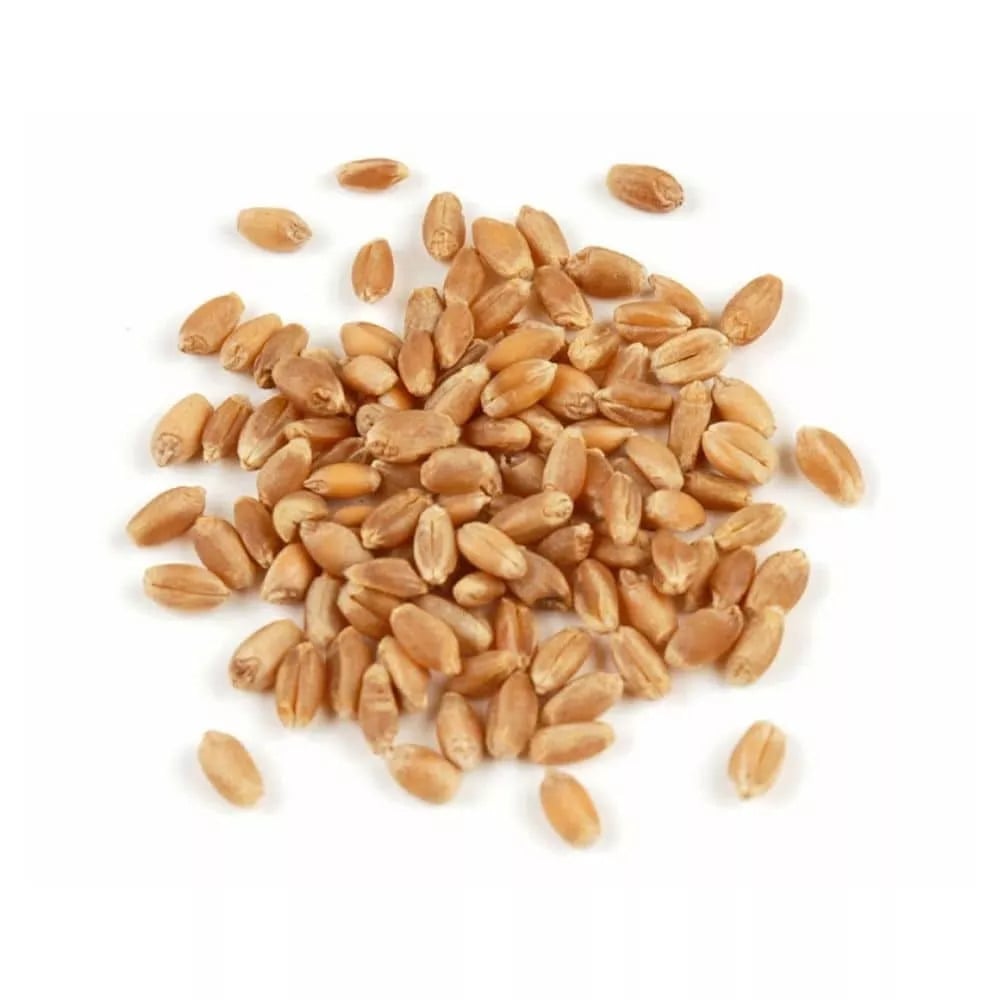
SOFT RED WHEAT BERRIES
------Soft red winter wheat berries cook up more quickly than the hard berries. They have a slightly sweet, nutty flavor, a darker color, and offer more of a whole-wheat look.
Soft red wheat berries have a lower protein content than hard red wheat berries and are often used in grain bowls, biscuits, muffins, and cereals, providing a softer texture and balanced flavor.
ANCIENT GRAIN WHEAT BERRIES
Ancient grains have been grown for centuries while retaining their original qualities. There are plenty of other examples of "non-wheat" ancient grains, but the ones below fall into the wheat category.
These grains have become popular due to their unique characteristics and wholesome benefits compared to regular grains.
READ MORE: 10 Ancient grains to elevate your health and culinary experience
Kamut Berries
Kamut berries, also known as Khorasan wheat, are an ancient grain with a rich, buttery flavor. Kamut offers about 20-40% more protein and higher fiber content than modern wheat varieties. Kamut berries are often used in salads, pilafs, and porridge and milled to make delicious bread.
BUY ORGANIC KAMUT BERRIES HERE
Spelt Berries
Spelt berries are closely related to wheat but have a distinct nutty flavor. They are rich in fiber, protein, and minerals like iron and manganese. Spelt berries are also a good option for those with gluten sensitivities. While spelt contains gluten, it is a different type of gluten than that found in modern wheat, so some people with gluten sensitivities may tolerate spelt better than other grains.
Spelt berries can be used in soups, salads, stuffing, or as a rice substitute.
BUY ORGANIC SPELT BERRIES HERE
Einkorn Berries
Einkorn berries are one of the oldest forms of cultivated wheat. They have a rich, earthy, unique sweet flavor packed with nutrients like protein, B vitamins, amino acids, and antioxidants. One of the key benefits of einkorn berries is their low gluten content compared to other modern wheat. This makes them easier to digest for those with gluten sensitivities. Einkorn berries can be used in pilafs, salads, and baked goods.

Wheat Berries Benefits
Wheat berries are the entire wheat kernel, including the bran, germ, and endosperm, making them a whole grain. They are the purest form of wheat before any processing, such as grinding into flour.
This means they retain all the nutrients found in the wheat kernel, including fiber, protein, vitamins, and minerals.
Here are some benefits of wheat berries and why they are considered a nutritious food:
1. Rich in Nutrients
Wheat berries are a rich source of various nutrients, including an excellent source of dietary fiber and a moderate amount of protein, making them an excellent plant-based protein source for vegetarians and vegans. They also provide essential vitamins and minerals such as B vitamins (including folate, thiamine, and niacin), iron, magnesium, and phosphorus.
2. High in Antioxidants
Wheat berries contain antioxidants such as phenolic acids, flavonoids, and lignans, associated with various health benefits, including reducing inflammation, protecting against chronic diseases, and supporting overall health.
3. Low Glycemic Index
Whole grains like wheat berries have a lower glycemic index than refined grains (a process that removes the bran and germ, like white flour, corn grits, white bread, and white rice), which means they cause a slower and steadier increase in blood sugar levels. This can help prevent spikes and crashes in energy levels and may reduce the risk of type 2 diabetes and metabolic syndrome.
4. Heart Health
Consuming whole grains like wheat berries has been linked to a reduced risk of heart disease and stroke. The fiber, antioxidants, and other nutrients in wheat berries may help lower cholesterol levels, reduce blood pressure, and improve overall heart health.
5. Weight Management
The high fiber content of wheat berries can promote feelings of fullness and satiety, which may aid in weight management by reducing overall calorie intake and preventing overeating.
6. Digestive Health
The fiber in wheat berries supports digestive health by promoting regular bowel movements, preventing constipation, and supporting the growth of beneficial gut bacteria.
7. Potential Disease Prevention
Consuming whole grains like wheat berries has been associated with a reduced risk of certain chronic diseases, including type 2 diabetes, certain types of cancer (such as colon cancer), and obesity.
8. Versatility
Wheat berries are a versatile ingredient that can be used in various dishes, including salads, soups, stews, pilafs, and baked goods. They are also great for milling to make healthier flour for baking goods. This makes it easy to incorporate them into a balanced and nutritious diet.
Are Wheat Berries Gluten-Free?
No, wheat berries contain gluten, a protein that can cause issues for people with gluten sensitivities or celiac disease. Therefore, they are not suitable for a gluten-free diet.
However, some ancient wheat berries, like einkorn and spelt berries, have a lower gluten content, which may make them more digestible for people with gluten sensitivities.
-v1710140630911.png?680x2646)
how to cook wheat berries
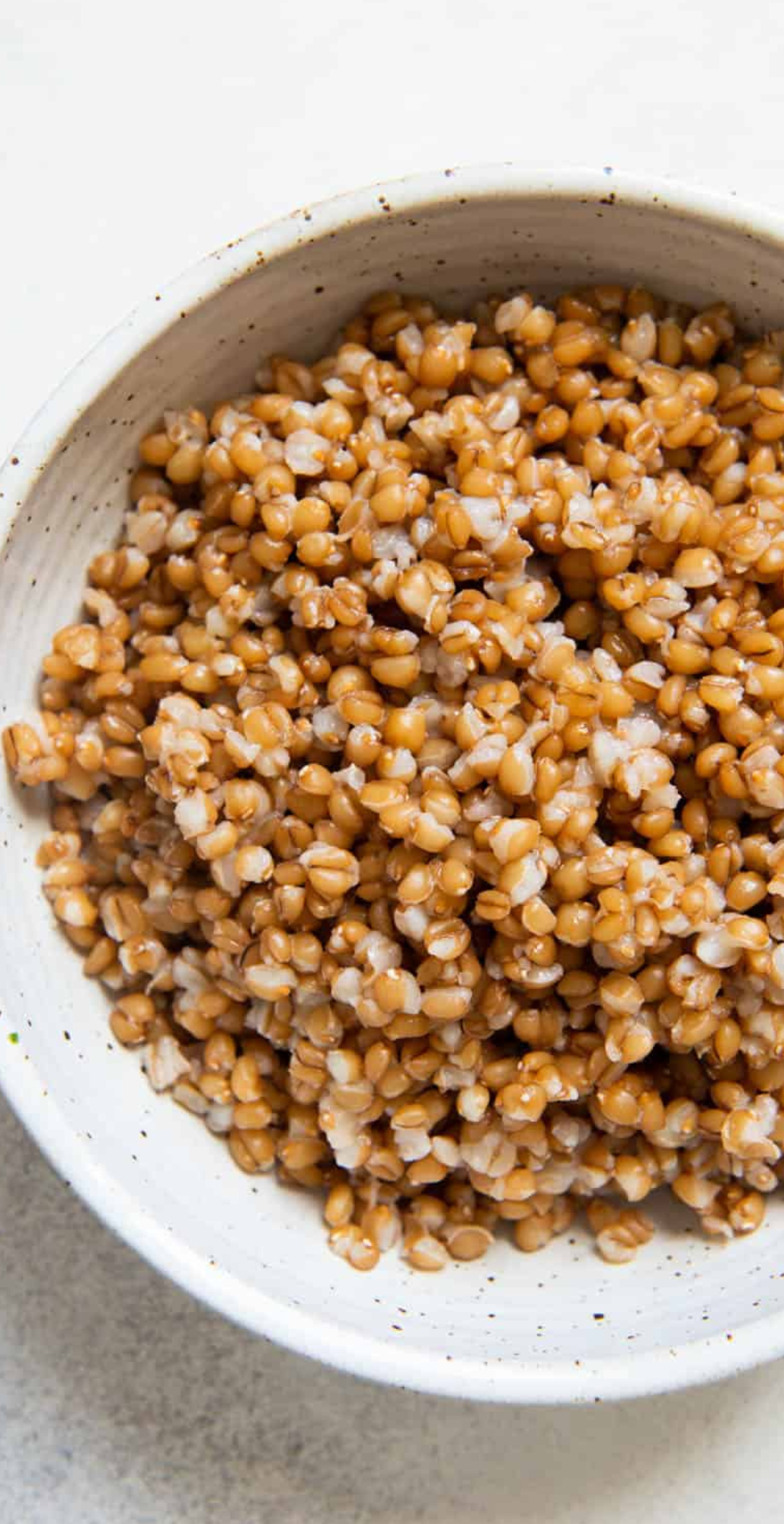
Cooking wheat berries is simple and similar to cooking other grains like rice or barley.
How to cook wheat berries:
- Rinse the wheat berries under cold water.
- Combine one part wheat berries with three parts water or broth in a saucepan.
- Bring to a boil, then reduce heat to low, cover, and simmer for about 45-60 minutes, or until tender.
- Drain any excess liquid and fluff the wheat berries with a fork before serving.
Take note:
- Soaking wheat berries overnight is not necessary, but it can reduce the cooking time.
- The time required to cook wheat berries can vary depending on the type and brand. We recommend cooking for around 35 minutes (if you soaked them) and then tasting. The berries should be chewy; if they are not (or still have a tough texture), continue cooking and taste test accordingly.
how to sprout wheat berries
Sprouting wheat berries can enhance their nutritional value and make them easier to digest.
Here's how to sprout wheat berries:
- Rinse the wheat berries under cold water and soak them in water, covered, for 6–12 hours.
- Drain the water, then rinse the berries.
- If you have a sprouting lid and jar, place it inverted at an angle in a dish to drain. If you don't have a sprouting lid, pour the berries into a colander to drain and rinse, then place the colander in a bowl and cover with a towel or loose plastic.
- The berries should be stored at room temperature and in a dark place.
- Rinse and drain every 8-12 hours until small shoots develop from the berries.
- Allow the spouts to grow to between 1/8 and 1/4 inch. The sprouts will be varying lengths, so aim for a loose average.
- The entire process should take 24-48 hours from the start of the soak.
- Once sprouted, use the wheat berries in salads, sandwiches, porridge, or as a topping for soups and stews. You can still use sprouted wheat berries to mill them and make bread.
- Store the drained sprouts in the refrigerator for up to 5 days. If they develop white fuzz during that period, they are thirsty and produce micro shoots to extract moisture from the air. This is not mold. Make sure to smell the wheat berries early in the process to get a sense of what fresh smells like.
READ MORE: The best seeds for sprouting

where to buy wheat berries
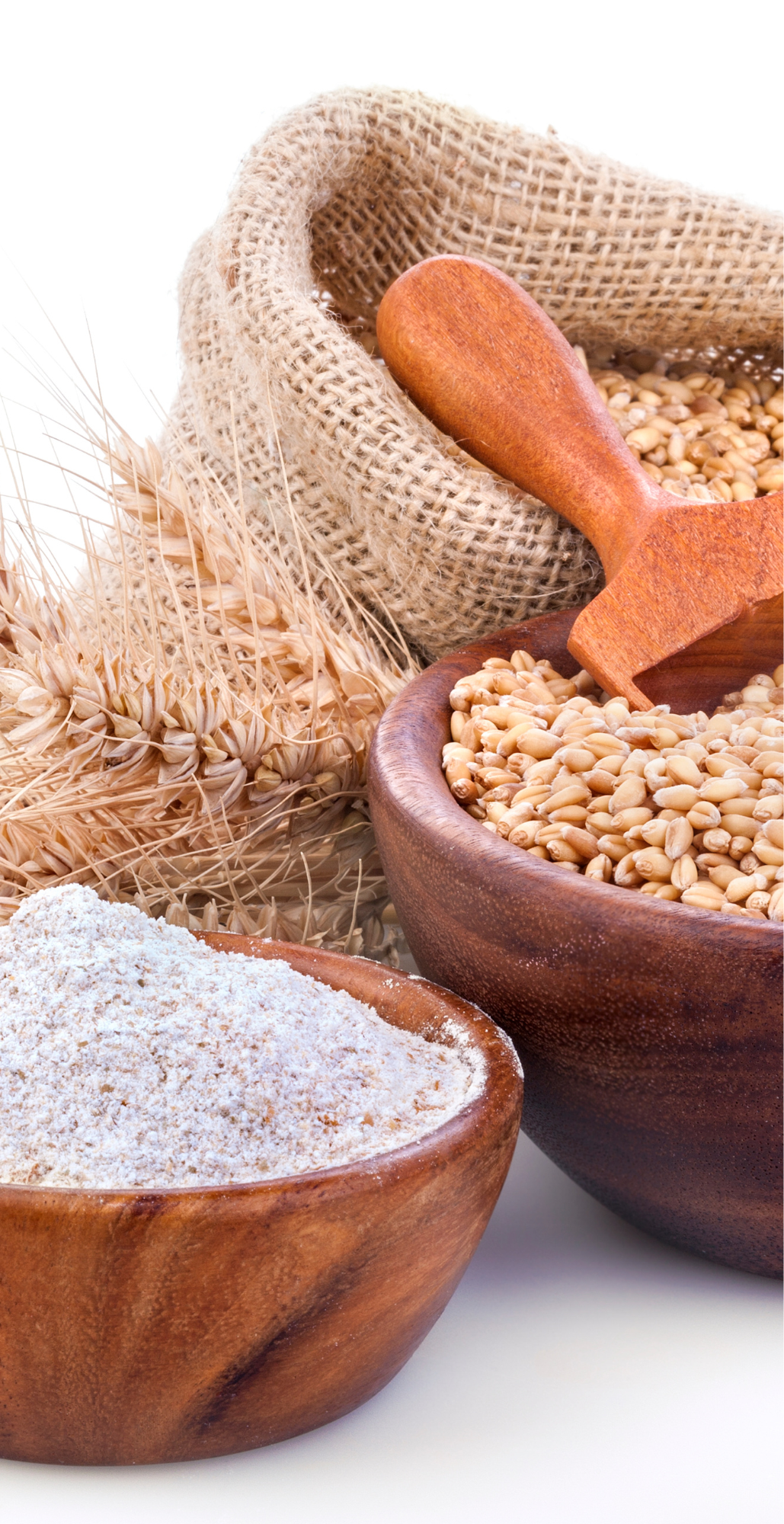
You can buy organic wheat berries right here at Country Life Natural Foods!
Wheat berries are readily available in most grocery stores, health food stores, and online retailers. Look for them in the bulk grains section or with other whole grains and flours.
How to Store Wheat Berries
Store wheat berries in an airtight container in a cool, dry place away from direct sunlight.
They will keep fresh for several months if stored properly, especially when containers with Gamma Seal Lids are used. You can also store them in the refrigerator or freezer for longer-term storage.
We're all about buying food in bulk and storing it long-term! Read more here for a guide on storing dry foods safely.
How to Grind Wheat Berries
You can grind wheat berries at home using a grain mill or a high-powered blender.
Simply add the desired amount of wheat berries to the mill or blender and process until you achieve the desired consistency, from coarse meal to fine flour.
making wheat berry bread
The Best Wheat Berries For Bread
When choosing wheat berries for breadmaking, several varieties are commonly recommended for their desirable flavor, gluten content, and baking qualities.
Here are some of the best wheat berries for bread:
Hard Red Winter Wheat
This is one of the most commonly used wheat varieties for breadmaking due to its high protein content and strong gluten formation, contributing to good bread structure and volume. It has a robust flavor and produces bread with a hearty texture.
Hard White Wheat
Hard white wheat has a lighter color and milder flavor than hard red wheat varieties. It still contains high protein levels and gluten, making it suitable for breadmaking. Breads made with hard white wheat tend to have a softer texture and sweeter flavor.
Soft White Wheat
Soft white wheat has lower protein content and less gluten than hard wheat varieties. It is often used in pastry and cake flour blends, but it can also be used in breadmaking to produce loaves with a tender crumb and mild flavor.
Ultimately, the best wheat berries for breadmaking depend on personal preference and the specific qualities desired in the finished loaf.
Experimenting with different varieties and blends can lead to discovering the perfect combination for your bread recipes.
Wheat Berry Bread Recipe
Wheat berry bread is a hearty and nutritious loaf that showcases wheat berries' nutty flavor and chewy texture.
Here's a simple recipe to try:
This hearty wheat berry bread is perfect for sandwiches or toasting, and it's packed with flavor and nutrition from the whole wheat berries. Enjoy!

WAYS TO ENJOY WHEAT BERRIES

There are numerous delicious ways to enjoy wheat berries!
1. Salads
Toss cooked wheat berries with diced vegetables (such as cucumbers, tomatoes, bell peppers), fresh herbs (like parsley or basil), crumbled feta cheese, and a simple vinaigrette dressing for a hearty and nutritious salad.
2. Soups and Stews
Add cooked wheat berries to vegetable or chicken soup or stews for added texture and nutrition. They absorb the flavors of the soup while providing a satisfying chewiness.
3. Pilafs and Grain Bowls
Cook wheat berries with aromatics like onions and garlic, then toss with toasted nuts, dried fruits, and herbs for a flavorful pilaf or vegetarian main course. Cooked wheat berries are also excellent as a base for grain bowls topped with roasted vegetables, grilled chicken or tofu, avocado, and a drizzle of tahini or yogurt sauce.
4. Breakfast Dishes
Make nutritious porridge. Cook wheat berries with milk or water until creamy, then top with fresh fruit, nuts, seeds, and a drizzle of honey or maple syrup for a nutritious and filling breakfast.
Try this Kamut berry porridge!
5. Baked Goods
Incorporate cooked wheat berries into bread dough or into muffins, pancakes, and breakfast bars for added texture, fiber, and nuttiness.
6. Side Dishes
Use cooked wheat berries in place of Arborio rice to make a hearty and nutritious risotto. Stir in Parmesan cheese and fresh herbs for extra flavor.
You could also combine cooked wheat berries with other cooked grains like quinoa or barley, along with chopped vegetables, herbs, and a zesty dressing for a refreshing side dish.
7. Desserts
Use cooked wheat berries as a base for creamy rice pudding or tapioca pudding, topped with cinnamon and fruit, for a comforting dessert.
Or how about making a fruit crisp? Mix cooked wheat berries with your favorite fruit (such as apples or berries), top with a crumbly oat topping, and bake for a wholesome fruit crisp.


